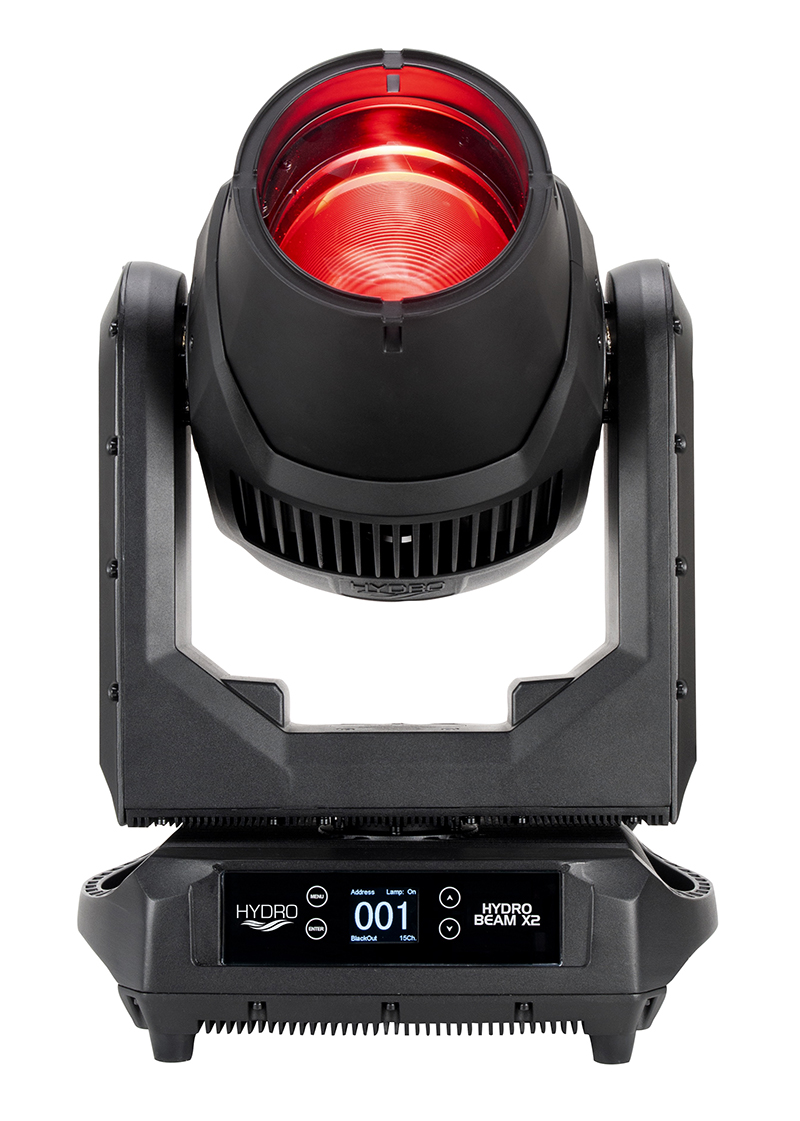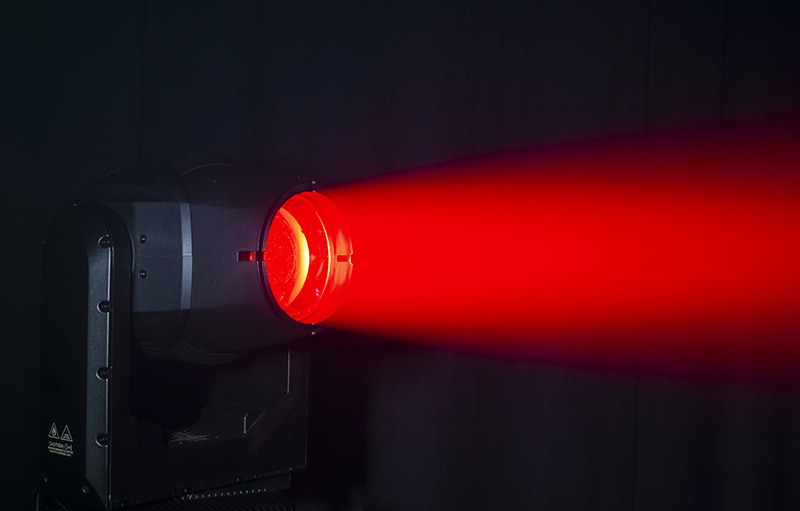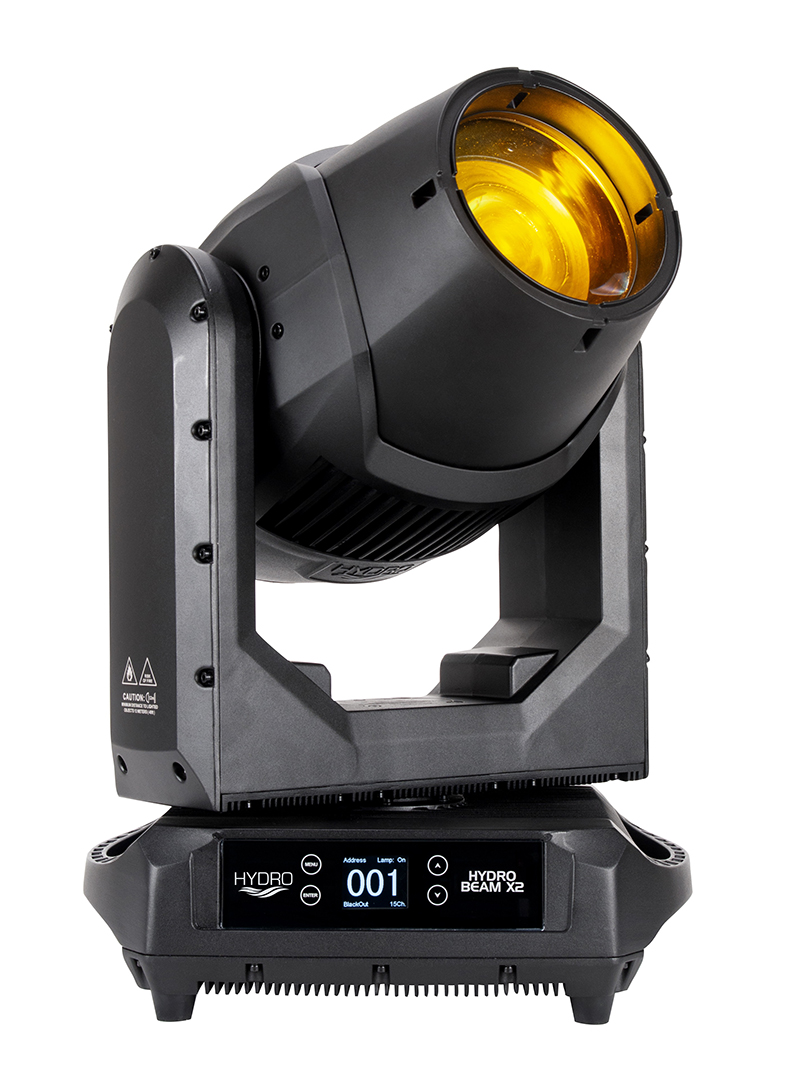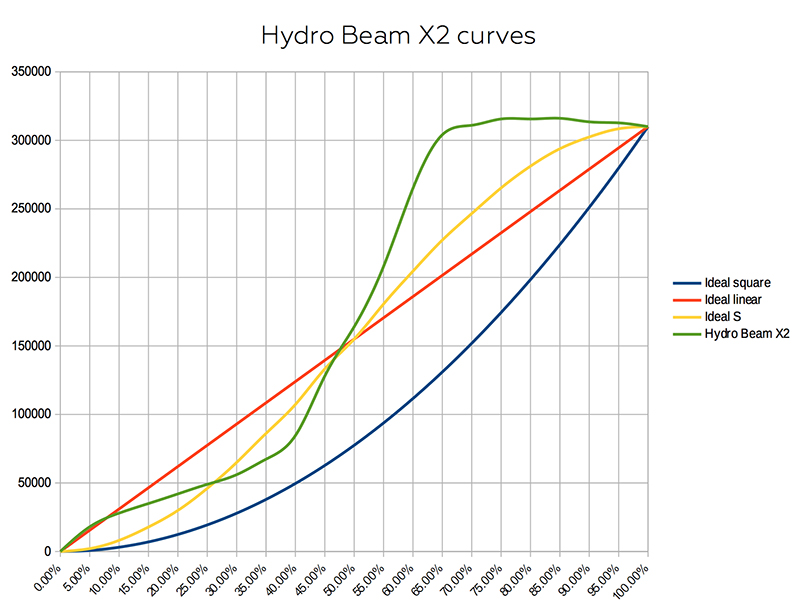
Those of us in the entertainment industry have witnessed a sea of change with regard to fixture light sources in the last several years. The ascendency of light-emitting diodes as the de facto source of many new lighting releases makes the odd light released with an arc lamp seem almost quaint; a mothball-scented curiosity of a soon-to-be sepia-tinted era. But while LEDs and their undisputed advantages in terms of efficacy, color stability, and responsiveness are clearly here to stay, there remains the occasional lighting application where an arc lamp beats the pants off an LED source. When one needs to create a lot of light in a very small area, the power of a tiny electric spark in a quartz glass bottle simply cannot yet be beat.
A few years ago, ADJ wasn’t on the radar of many professional users, with the company at that time focusing their attention on the DJ and semi-professional market. The Hydro series of lights, introduced at the 2018 LDI conference, seems to signal a change in direction, as they turn their attention toward more midrange professional products. Today we’re looking at the Hydro Beam X2, a powerful beam fixture with more than enough horsepower to compete on even the largest shows.

Inside the Fixture
The Hydro Beam X2 is powered by an Osram Sirius HRI 370W LL (for “Long Life”) super short arc lamp, which comes pre-focused in its reflector, and has an advertised lifespan of 6,000 hours. Lamp change is a bit finicky — the lamp housing is accessible via four captive recessed hex screws that require a somewhat long wrench to get to, and I personally would not attempt changing a lamp in the rig. The published color temperature is 7,400 Kelvin, and I measured the final output at 6,500K by the time it passed through all the internal glass. I measured 310,000 lux at the center of the beam from five meters. Brightness measurements on beam lights like this should always be looked at as part of a larger brightness picture; while that number is impressive, there’s other aspects to consider. Let’s just say this 3° beam is ultra bright.
Dimming is accomplished with a pair of metal flags that close across the beam like a pair of curved scissor blades. As an effects light, the fixture has an uneven and peaky beam profile. This is exacerbated when dimming, which is very rough — as the two metal blades close across the beam, they cause highly visible patterning, squeezing the beam down from opposing sides. While my meter showed an exaggerated S-curve as the dimming law, meters don’t give the complete picture here. So much of the beam’s energy is concentrated down the center, and the dimming blades cause the edges to darken first, the center remains mostly unaffected until down around 65% on the dimming channel. This is not a light for theatrical-grade fades, but all this is not meant as criticism. This is an effects luminaire, one which is made to create high-power, paint-peeling, nearly parallel beams, and the dimming is just fine for the purpose it’s designed for. It’s all about intended usage scenarios. Strobing is also accomplished via the dimming flags, with both synchronous and random strobes available. ADJ tells me they plan to add additional strobe functions in upcoming software releases.

Immediately after the angled hot mirror sits the unified head module, with all the available effects being housed together. First in line after the dimming blades is the color wheel, with fourteen colors plus open. These are trapezoidal filters that are glued in place, and therefore not user-replaceable. The wheel includes two color correction filters, as well as a four-color effect filter, which has red, amber, green, and blue filters together in a window pane-like arrangement. This wheel is fully indexable, with gaps between adjacent filters being small enough that some nice split color combinations can be made, and many adjacent colors would work well in effects. There’s a nice range of both saturated colors and pastels.
After the color wheel comes the rotating and indexable gobo wheel, with 10 patterns plus open. The gobos are very tiny, but intended to be user-replaceable if desired, and ride in the familiar carriage system. There are two beam reducers in there too, for getting those laser-thin looks. Given the narrow beam angle, I feel the gobos are probably best used in conjunction with one of the prisms. There is a motorized focus mechanism to sharpen/soften the gobos.
After the color and gobo system come the fixture’s frost and dual prisms, a six-facet linear prism and an eight-facet pyramidal circular prism, both of which are indexable and rotatable. Both prisms can be overlaid at the same time, however, the linear prism will be removed from the beam if one inserts the frost at the same time, as both occupy the same plane perpendicular to the optical train. Both prisms and the frost flags feature quick insertion, fast enough to use an effect. The frost is a true frost, not just a contrast reducer, and is heavy enough to completely erase the edges of any gobos or prism that might be in the beam. It is also non-variable, that is, it is either completely in the beam or completely out. Pan and tilt were completely smooth with no noticeable judder, even across very long fades. A full-range pan movement takes a minimum of ~3.3 seconds to complete, while tilt takes a minimum of ~2.1 seconds.

IP65 Protection
Owing to its IP65 construction, the Hydro Beam is a hefty light. Much of the fixture’s lower head is dedicated to aluminum fins acting as a heat sink, along with several fans for thermal control. Like all lights intended for outdoor use, the head is sealed against water and particulates, so accessing the internal effects module requires removing a series of hex-head screws to access the gasket-sealed inside of the head. The exterior chassis of the fixture (minus the head “shell” covers) is almost completely solid metal and should prove to be quite sturdy.
The fixture accepts data in via five-pin DMX ins and pass-throughs, and also via WiFly EXR wireless DMX, which I was unable to test. Power in is via Seetronic TRUE1-style ins and pass-throughs, and the power supply auto-ranges from 100-240V. Both the power and data connectors have rubber caps to seal out dust and moisture. Resetting the fixture takes ~34 seconds to final output, with the fixture beginning to output before it has reached its final position, something to be aware of when resetting in a look during a show. The menu system is accessed via the front of the fixture, for setting addressing and personality adjustments. The Hydro Beam X2 has a base of 16”by 13” and stands 25 inches tall. It weighs 29 kg (64 lbs.). Rigging is via the traditional Omega brackets fitted with the mounting hardware of your choice.

At-A-Glance:
Rugged and Bright
The ADJ Hydro Beam X2 represents a different direction for ADJ, and an intriguing one. Stunningly bright and optimized for use on not only indoor shows but in inclement weather of all kinds — including “jetted water” and dust storms — the Hydro Beam offers a solid feature set in a rugged frame that should stand up to the most demanding environments.
ADJ Hydro Beam X2
PROS: Very bright, long lamp life, accepts wireless DMX
CONS: Difficult-to-reach lamp housing screws
FEATURES
- IP65 Rating
- 14 + Open Color Wheel
- Linear Motorized Focus
- 8-Facet Circular Prism Flags
- 6-Facet Linear Prism
- 10 Replaceable Rotating/Indexable Gobos
- Frost Filter for Wash Effects
- 6,000-Hour Lamp Life
- 16-Bit Pan/Tilt Motor Control
SPECS
- Light Source: Osram Sirius HRI 370W LL
- Color Temp: 6500k
- Beam Size: 3°
- Fixture Size: 16”x 13” x 25”
- Weight: 65 lbs.
- MSRP: $5,499.95
- Manufacturer: ADJ
More Info: www.adj.com


